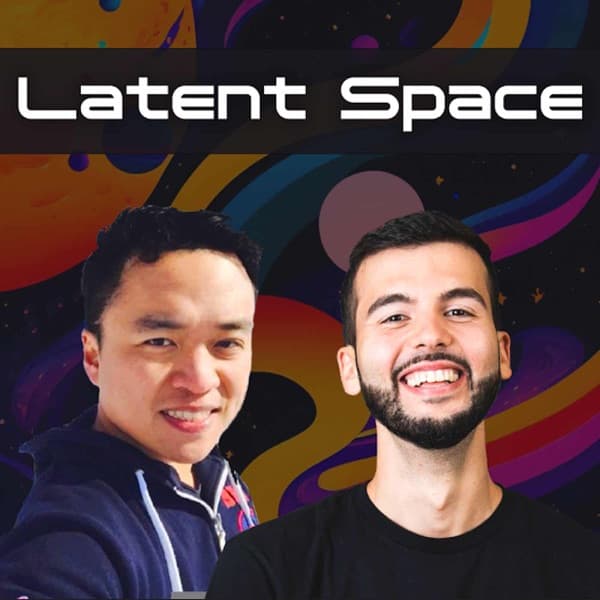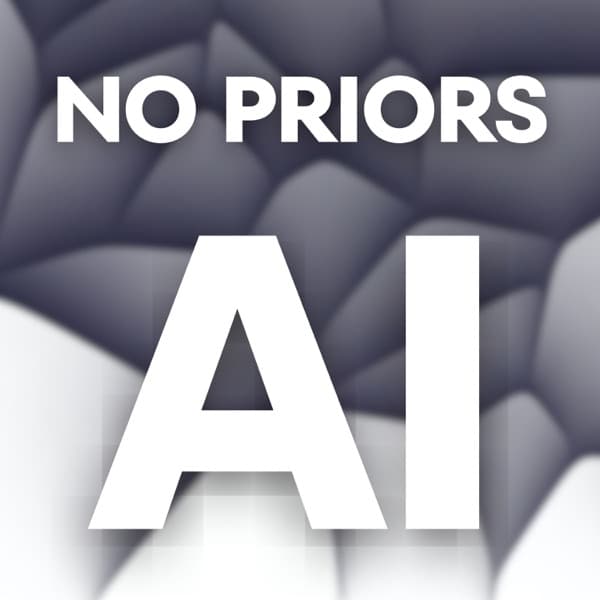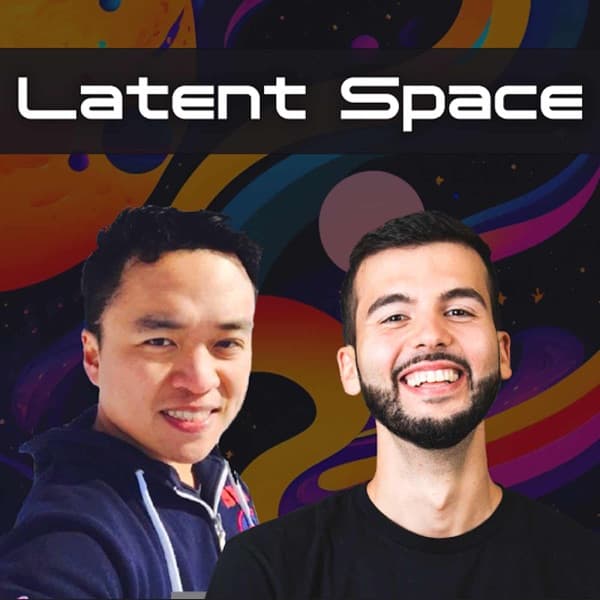Fireship: PostgreSQL can replace many web development tools by using its extensions and features.
OpenAI: AI accelerates drug discovery and diagnostics at Ohio State University.
OpenAI: OpenAI is investing $50 million to provide universities with free access to AI tools, aiming to revolutionize research and education.
Latent Space: The AI Engineer Podcast: The discussion focuses on using AI models, specifically Claude from Anthropic, to play Pokemon Red, exploring its capabilities and limitations in navigating and understanding the game.
Fireship - I replaced my entire tech stack with Postgres...
The video discusses how modern web development often involves using numerous third-party tools, which can be costly and complex. Instead, PostgreSQL, a relational database, can fulfill many of these needs through its advanced features and extensions. PostgreSQL supports advanced data types like binary JSON, arrays, and geometric types, making it versatile for various applications. It also has a vast ecosystem of extensions that allow developers to implement features like cron jobs, in-memory caching, vector databases, full-text search, GraphQL APIs, real-time data synchronization, authentication, and analytics directly within the database. These capabilities can reduce the need for additional services and simplify the development process. The video also highlights Neon, a serverless platform that hosts PostgreSQL, making it easy to start and scale projects with features like branching for different workflows.
Key Points:
- PostgreSQL can handle advanced data types and unstructured data using binary JSON, reducing the need for NoSQL databases.
- Extensions like PG cron and PG Vector allow PostgreSQL to perform tasks like cron jobs and vector data storage, replacing external services.
- PostgreSQL can serve as a full-text search engine and GraphQL API provider, eliminating the need for separate tools like Algolia or ElasticSearch.
- Real-time applications can be supported using Electric SQL, which syncs data between the database and frontend without additional code.
- PostgreSQL can manage authentication and analytics internally, using extensions like PG crypto and PG moon cake, reducing reliance on external services.
Details:
1. 🔧 Modern Web Development Challenges
- Modern web development faces a paradox where available tools simplify app creation but also add complexity by relying on multiple services.
- Developers increasingly depend on third-party services, escalating costs and dependencies, even for simple applications.
- The use of tools like in-memory cache databases, cron services, and serverless functions complicates development unnecessarily for small projects.
- A humorous observation links the economic impact, such as rising homelessness, to the release of new development tools like next.js, suggesting broader economic implications.
- A strategic shift is suggested towards minimizing reliance on excessive third-party tools, advocating for a more streamlined and minimalistic development approach.
- Specific examples of this reliance include the use of serverless functions for tasks that could be handled with simpler solutions, demonstrating the unnecessary complexity introduced.
2. 🐘 Why PostgreSQL Stands Out
- PostgreSQL can achieve 90% of web development needs, indicating its versatility and capability in handling a wide range of applications.
- The segment promises to explore 11 unique and unconventional ways to utilize PostgreSQL, suggesting a breadth of functionality beyond traditional uses.
- By the end of the segment, there is a goal to build a full-stack application using only an open-source database, showcasing PostgreSQL's potential as a comprehensive tool for developers.
3. 🛠️ Unorthodox Uses of PostgreSQL
- PostgreSQL offers advanced data types, including binary JSON, arrays, key-value stores, and geometric types, making it versatile for various data structures.
- Its extensibility enables developers to create custom data types and tap into a rich ecosystem of extensions, similar to modding a game.
- PostgreSQL can handle unstructured data typically associated with NoSQL databases, such as dynamic objects, while maintaining the benefits of SQL with features like JSONB support.
- Developers can create tables with JSONB data types, insert raw JSON strings, and query this unstructured data using standard SQL queries with SELECT statements and WHERE clauses.
- A practical example of PostgreSQL's versatility is its ability to replace multiple database systems by handling both structured and unstructured data efficiently.
- The JSONB feature allows for efficient indexing and querying of JSON data, making PostgreSQL a strong candidate for projects requiring flexibility and performance.
- Case studies show significant improvements in data retrieval speeds and storage efficiency by utilizing PostgreSQL's JSONB and other advanced data types.
4. 🚀 Getting Started with Neon
- Neon provides a serverless platform for PostgreSQL databases, making it easy to start and scale projects.
- Neon offers a free tier and developer-friendly guides for major frameworks and ORM systems.
- Features like branching in Neon allow for different data workflows for development, testing, and production.
- Neon's platform automatically scales as the application grows, requiring zero effort from developers.
5. ⏲️ Automating Tasks with PostgreSQL Extensions
- PostgreSQL offers a free Cron job feature through the PG cron extension, allowing users to run SQL statements on a schedule without needing to edit the Linux cron tab file or pay for a SaaS solution.
- Developers can set up scheduled tasks such as data deletion or aggregation using PostgreSQL's cron, which automates routine database maintenance tasks.
- PostgreSQL can be utilized to create an in-memory cache database using an unlogged table, providing a cost-effective alternative to services like Redis.
- By using unlogged tables, PostgreSQL disables write-ahead logging, enhancing performance for caching purposes without compromising on essential durability features.
- The PostgreSQL configuration can be optimized to store cache data in a shared buffer, ensuring high availability in RAM, which improves data retrieval speed.
- PostgreSQL's autovacuum daemon can be used in conjunction with PG cron to manage database bloat and maintain performance efficiency.
6. 🔍 Advanced Data Handling with PostgreSQL
- Consider using the PG Vector extension in PostgreSQL for AI applications with RAG stack instead of paying for a separate vector database; it provides a vector data type for multi-dimensional data storage.
- Use the PG Vector extension to perform queries for nearest neighbors based on L2 distance.
- Enhance capabilities with the pgai extension, allowing handling of vector embeddings and dataset vectorization entirely in SQL code.
- Leverage PostgreSQL's built-in TS Vector type for full-text search capabilities, enabling typo-tolerant search results without the need for external tools like Algolia.
- Create a generalized inverted index using PostgreSQL's TS Vector type to improve performance in ranking and querying likely search results.
- Utilize PostgreSQL's double app tech search operator for efficient querying of full-text search data.
7. 🔄 Real-Time Features and APIs
- Transform your database into a GraphQL API using the magic PG GraphQL extension, eliminating the need for additional servers or paid services and enabling easy database queries from any programming language.
- Write GraphQL resolvers directly in SQL code to streamline integration and reduce system complexity.
- Implement Electric SQL as a sync layer to maintain real-time data accuracy, ensuring end-users have access to the most current information by sitting between the database and front-end code.
- Example: A retail application can use Electric SQL to keep inventory levels updated in real-time across multiple storefronts, while PG GraphQL enables flexible data access for developers working in different languages.
8. 🔐 Security and Analytics in PostgreSQL
8.1. 🔐 Security in PostgreSQL
8.2. 📊 Analytics in PostgreSQL
9. 📈 Building a Full-Stack Application with PostgreSQL
- PostgREST automatically converts a PostgreSQL database into a RESTful API, eliminating the need to build one from scratch.
- Navigate to LocalHost with a table name to query data from PostgreSQL, returning it in JSON format.
- Features like filtering, pagination, and authentication are supported, enhancing API usability.
- HTML, CSS, and JavaScript can be stored directly in the database, advancing towards a full-stack application.
- React server components can run within PostgreSQL, optimizing data proximity to the UI for enhanced performance.
OpenAI - OpenAI & The Ohio State University
Peter Mhler, Executive Vice President for Research Innovation at Ohio State University, discusses the transformative impact of AI in medical research. AI enables rapid development of small molecules for therapies, reducing the time from years to minutes. This technology is crucial in handling complex genomic data from 2.5 million patients annually. AI facilitates faster connections and insights, particularly in understanding and preventing sudden cardiac death in children. By integrating vast genomic data, AI helps in quickly identifying solutions and diagnostics, potentially saving lives.
Key Points:
- AI reduces drug discovery time from years to minutes.
- Ohio State University handles data from 2.5 million patients annually.
- AI helps in understanding and preventing sudden cardiac death.
- AI integrates genomic data for rapid insights and diagnostics.
- AI accelerates research and innovation in medical fields.
Details:
1. 🔬 AI Revolutionizing Drug Discovery
- AI is significantly reducing the drug discovery timeline, with processes that traditionally took 10 years now being completed in just 15 months.
- Utilizing AI for drug discovery not only speeds up the process but also reduces costs by approximately 60%, enhancing the overall efficiency of pharmaceutical R&D.
- AI-driven platforms are being used to analyze vast datasets, leading to more accurate predictions of drug efficacy and safety, thus shortening the trial phases.
- An example includes the use of machine learning algorithms to predict protein folding, a critical aspect of drug interaction, which has traditionally been a time-consuming process.
- Companies like Insilico Medicine have reported a reduction in preclinical development phases from 5 years to less than 12 months using AI technologies.
- Innovative AI applications, such as deep learning, are enabling the identification of potential drug candidates in a fraction of the usual time, enhancing the pipeline of new treatments.
2. 👨🔬 Meet Peter Mühler: A Passion for Science
- Peter Mühler serves as the Executive Vice President for Research, Innovation, and Knowledge at Ohio State University, where he plays a pivotal role in overseeing research initiatives, fostering innovation, and building strategic partnerships.
- Under his leadership, the university has seen significant advancements in research output and innovation strategies, contributing to a more robust academic and research environment.
- Mühler's efforts in enhancing collaborations with industry partners have resulted in increased funding and resources for research projects.
- His strategic vision has been instrumental in driving the university's mission to be at the forefront of scientific discovery and technological advancement.
3. 🧩 Solving Complex Genetic Puzzles
- Focus on real-world impact: Prioritize solving real-life issues over academic pursuits, such as addressing sudden cardiac death in children rather than focusing on grants and rankings.
- Challenge of genetic research: Highlight the difficulty faced by individual laboratories in solving complex genetic puzzles, indicating that collaboration or additional resources may be necessary.
- Real-world example: Explore the specific case of sudden cardiac death in children, showcasing the urgent need and potential impact of genetic research in this area.
- Strategic collaboration: Emphasize the need for interdisciplinary collaboration and pooling of resources to effectively tackle complex genetic challenges.
- Process insights: Provide a brief overview of the genetic research process, highlighting the stages where collaboration and innovation are most needed.
4. 🏥 AI in Genomic Research at Ohio State
- Ohio State processes data from 2.5 million patients annually, highlighting the scale of genomic data being analyzed.
- AI enables faster identification of connections within genomic data that were previously impossible, accelerating research progress.
- The integration of AI allows for rapid combination and analysis of individual genomic data with hundreds of thousands of other genomes.
- AI is used to quickly identify causes and solutions for conditions like sudden cardiac death, improving diagnostic speed and preventive measures.
OpenAI - Introducing NextGenAI: A consortium to advance research and education with AI
OpenAI is making a significant investment of $50 million to offer universities free access to advanced AI tools and funding for research across various disciplines. This initiative aims to democratize AI access, enabling institutions like the University of Oxford to digitize and catalog centuries-old collections that have never been available online. At Boston Children's Hospital, AI is being used to reduce the average seven-year diagnostic period for rare diseases, thereby decreasing healthcare costs and clinician frustration. Ohio State University plans to integrate AI across fields such as agriculture and space exploration, while Howard University focuses on preparing students and faculty for future challenges by incorporating AI into learning and administrative processes. This partnership is expected to create AI fluency among students, equipping them to tackle major societal issues like energy constraints and healthcare.
Key Points:
- OpenAI invests $50 million to provide free AI tools to universities.
- AI helps digitize and catalog historical collections at Oxford.
- AI reduces diagnostic time for rare diseases at Boston Children's Hospital.
- Ohio State University uses AI in agriculture and space exploration.
- Howard University integrates AI into education and administration.
Details:
1. 🔍 University Inflection Points
1.1. Historical Inflection Points
1.2. Current and Emerging Trends
2. 💡 OpenAI's Investment in Education
- OpenAI is investing $50 million to provide universities with free access to cutting-edge AI technologies, aiming to enhance educational resources and research capabilities.
- This initiative includes the deployment of AI tools such as GPT models to advance curriculum development and research projects.
- Universities involved in this program will gain access to OpenAI's expertise and resources, fostering innovation and collaboration in AI fields.
- The investment is part of OpenAI's broader strategy to democratize AI education and equip the next generation of leaders with necessary skills.
- Previous initiatives by OpenAI in education have shown significant improvements in curriculum engagement and research outputs, suggesting this investment could have substantial impacts.
- The program is expected to support thousands of students and educators, ultimately contributing to advancements in AI research and application.
3. 📚 Oxford's Collaboration with OpenAI
- Oxford University is partnering with OpenAI to offer free AI tools and funding for interdisciplinary research, leveraging advanced technology to drive innovation.
- A key focus is on digitizing and making accessible the Bodleian library's historical collections, some of which have been held for centuries and are not currently available online.
- The collaboration aims to enhance research capabilities across diverse fields by integrating AI, thus potentially accelerating academic progress and discovery.
- By providing these resources, Oxford and OpenAI are working to democratize access to valuable historical documents and data, fostering a broader academic engagement and study.
- This initiative could significantly impact the way historical research is conducted, offering new methodologies and insights through AI-driven analysis.
4. 🧬 Accelerating Genetic Diagnostics
- It takes on average 7 years for a patient with a rare and orphan disease to get diagnosed, highlighting the need for more efficient diagnostic processes.
- The initiative aims to make invisible genetic data visible and democratize access to genetic diagnostics, potentially reducing diagnosis times significantly.
- Implementing advanced genomic technologies and data sharing platforms can accelerate the identification of genetic disorders, reducing the diagnostic cycle from years to potentially weeks or months.
- Enhancing collaboration between healthcare providers and genetic researchers is crucial for the success of this initiative, ensuring better data integration and patient outcomes.
5. 🔬 AI Empowering Diverse Research
- The partnership aims to democratize AI, making it accessible to all researchers at Ohio State University.
- AI tools will be integrated across various research projects, enhancing innovation and knowledge dissemination.
- Specific AI tools, such as machine learning algorithms and data analysis software, are being deployed to tackle complex research problems.
- Research areas benefiting from AI integration include medicine, engineering, and environmental science, leading to faster and more accurate results.
- The initiative has led to a 30% increase in research output efficiency, showcasing the transformative impact of AI on academic research.
6. 🏛️ Strategic University Planning with AI
6.1. Transformative Learning and Teaching
6.2. Administrative Efficiencies
6.3. Strategic Planning and AI
7. 🌍 Tackling Global Issues with AI Innovation
- Cutting diagnostic odyssey time for patients reduces clinician frustration and healthcare costs.
- AI training at scale is crucial as employers seek a workforce with strong AI skills to address global challenges like energy constraints, healthcare, and agriculture.
- Collaborating with OpenAI to enhance AI fluency among students aims to empower them to tackle critical global issues.
- Sharing AI knowledge broadly is essential for engaging people in solving pressing problems facing humanity.
Latent Space: The AI Engineer Podcast - How Claude 3.7 Plays Pokémon

The conversation centers around the use of AI models, particularly Claude from Anthropic, to play Pokemon Red. David Hershey from Anthropic shares insights into the development and implementation of this project, which started as a personal experiment to explore AI agents' capabilities. The AI, Claude, attempts to play the game by navigating through it, learning from its environment, and using tools to assist its gameplay. Despite its limitations in visual recognition and navigation, Claude has shown improvements with newer model versions, demonstrating its ability to learn and adapt over time. The project serves as a fun and engaging way to evaluate AI models' progress and capabilities, offering insights into their potential applications in real-world scenarios. The discussion also touches on the challenges of memory management and the potential for future improvements in AI models to enhance their performance in complex tasks like playing video games.
Key Points:
- AI models like Claude can play games like Pokemon Red, showcasing their learning and adaptation capabilities.
- The project started as a personal experiment to explore AI agents' capabilities in long-running tasks.
- Claude uses tools to assist its gameplay, but struggles with visual recognition and navigation.
- The project serves as a benchmark for evaluating AI models' progress and capabilities.
- Future improvements in AI models could enhance their performance in complex tasks like video games.
Details:
1. 🎙️ Welcome to Latentspace Lightning Pod
- Latentspace Lightning Pod is introduced by Alessio, a partner and CTO at Decibel, setting the stage for the episode.
- Special co-host for the episode is Vibu, a known figure within the Latentspace Discord community.
- Regular co-host Swix is absent from this episode, indicating a change in the usual hosting dynamic.
- The episode aims to delve into topics relevant to the Latentspace community, although specific topics or guests are not mentioned in the introduction.
2. 👥 Introducing Special Guest David Hershey
- David Hershey is associated with Anthropic, contributing to cloud-based projects involving Pokémon, highlighting his expertise in innovative tech applications.
- David Hershey and the host's initial connection through Magic the Gathering underscores the strategic value of networking through shared interests, which can lead to significant professional partnerships.
- Their collaboration showcases the potential success of leveraging personal interests into professional opportunities, demonstrating how initial casual interactions can evolve into impactful professional collaborations.
3. 🔍 The Viral Cloud Plays Pokemon Project
- The project takes inspiration from 'Twitch Plays Pokémon,' allowing viewers to control the game via chat commands, but in this case, an AI is in control.
- The AI operates on a cloud platform, tasked with navigating the Pokémon game without human intervention.
- A significant challenge faced by the AI is being stuck in Mount Moon for 52 hours, repeatedly encountering the same obstacle, showcasing the complexity of decision-making in gaming environments.
- The project's viral nature highlights substantial public interest in AI-driven gaming, demonstrating the intersection of technology and entertainment.
- The AI's persistent challenges in the game emphasize the intricacies of programming AI for dynamic and unpredictable scenarios.
4. 🛠️ Development and Challenges of Cloud Plays Pokemon
- The project began in June of last year as a personal experiment to test agents in a real way, particularly focusing on Claude for long-running tasks. The initial phase was facilitated by existing attempts from a team member, which provided a foundational shell for development.
- Key milestones were marked by the release of new models, significantly improving project capabilities. For instance, the release of Sona 3.5 in October enhanced the model's ability to perform complex tasks such as exiting buildings and naming Pokémon.
- The project acted as a testbed for the developer to evaluate model improvements, providing insights into each version's capabilities, and understanding their practical applications.
- Challenges included aligning model outputs with expected gaming actions, requiring iterative testing and refinement with each model release.
- A Slack channel, 'Claude Plays Pokémon,' was utilized to share progress and engage with the community, fostering collaborative problem-solving and feedback collection.
5. 🧠 Testing AI Capabilities with Pokemon
- Early versions of AI, like Sonic 3.7, show clear differences and limitations in performance, particularly in task execution and screen recognition.
- AI's current capabilities are likened to being in 'Mount Moon for its 50-something hour,' indicating early developmental stages and a lack of strong directional sense.
- The AI demonstrates basic competency by successfully catching its first Pokémon, showcasing its ability to perform foundational tasks.
- Internal updates on AI progress, such as achieving basic milestones, generate excitement and engagement among team members.
- Testing AI with Pokémon offers a novel approach to evaluating model capabilities, focusing on task-specific challenges and successes.
- There is potential for improving AI's performance by refining task recognition and execution strategies within the game environment.
6. 🎮 Game Mechanics and AI Learning
- The AI has generated millions of words over eight months of playing Pokemon, showcasing extensive learning and adaptation.
- Specific improvements in AI's performance are aligned with initial model expectations, such as enhanced decision-making and strategy execution.
- The AI's learning process has led to more effective gameplay, as evidenced by better understanding of game mechanics and opponent strategies.
- Continual improvement in AI performance opens opportunities to effectively communicate advancements and engage with the public.
- The AI demonstrates increased proficiency in complex scenarios, indicating successful implementation of learning algorithms.
7. 🎨 AI Architecture and Prompting Design
- Pokemon was chosen for AI development due to its isometric design and minimal hidden object facts, making it suitable for AI modeling.
- The choice was influenced by personal nostalgia and the popularity of 'Twitch Plays Pokemon' from 2014.
- Pokemon's game mechanics, such as the lack of consequences for inactivity, make it ideal for AI training and testing.
- An architecture diagram was created to aid understanding, shared via screen share and show notes for accessibility.
- The architecture is not optimized to beat Pokemon but to understand and benchmark AI capabilities, particularly with quad in the loop.
8. 🤔 AI Vision Challenges and Solutions
- The core process of AI vision involves constructing a prompt, engaging the model, and effectively utilizing tools to retain vital information within the context window.
- Key components of the prompt structure include: defining necessary tools, a concise system prompt to instruct tool usage, and corrective facts to rectify known errors in model output.
- A well-maintained knowledge base is crucial for storing long-term concepts and memories, facilitating the model's sustained operations and learning.
- To improve conversation efficiency, history is recorded as a sequence of tool usages, focusing on minimizing user interruptions, allowing iterative tool utilization and result processing by the model.
9. 🔍 AI Memory and Game State Understanding
- Investment in developing tools enhances AI's interaction with game environments, focusing on spatial awareness and navigation.
- AI uses a navigator tool to execute button sequences and receive screenshots with coordinates, improving spatial perception on a Game Boy screen.
- Extensive reverse engineering of Pokémon Red allows for comprehensive game state extraction, facilitating manipulation and experimentation.
- Quad Code release aids in managing memory addresses and integrating them with Python, simplifying complex tasks and enhancing AI functionality.
- Programmatic access to game state information allows AI to manipulate the environment effectively, improving gameplay strategies.
10. 📚 AI Knowledge and Learning Over Time
- AI struggles with visual recognition, leading to errors in game zone transitions if not correctly informed.
- AI occasionally gets stuck, exemplified by spending 12 hours pressing a button due to a misinterpreted on-screen element.
- AI receives reminders to use its knowledge base when it detects inactivity or errors.
- It's uncertain whether the AI's knowledge about game elements, such as Pokémon types and weaknesses, aids or hinders performance.
- The AI sometimes hallucinates game knowledge, mistaking in-game characters for others due to its learned concepts.
- AI has access to vast online game guides, contributing to its knowledge base, but its application is inconsistent.
- During gameplay, the AI learns through trial and error, such as realizing ineffective moves (e.g., using Thundershock on Geodude).
- AI successfully applies learned strategies such as type advantages in battles, demonstrating adaptive learning.
- AI's performance improves over time as it corrects earlier mistakes, showing progressive learning capabilities.
11. 🧭 AI's Sense of Self and Navigation
- AI sometimes gets confused about the identity of the playable character in a game scene, indicating a need for better contextual understanding and self-awareness.
- Attempts to guide AI using specific prompts about its position and appearance (e.g., exact coordinates, wearing a red hat) have been made, but these are not always effective due to AI's limited spatial awareness.
- The AI struggles with understanding spatial relationships on a screen, such as identifying the center of a Game Boy screen, highlighting an area for improvement in AI's spatial navigation capabilities.
- Current AI models like 'quad' are not proficient at maintaining spatial awareness, which leads to losing track of elements during navigation tasks.
- Developing AI with improved spatial awareness could significantly enhance its ability to navigate complex environments, such as video games, where understanding position and movement is crucial.
- Case studies have shown that AI's ability to maintain spatial awareness is crucial for tasks involving dynamic environments, and current limitations lead to frequent errors in navigation tasks.
- To improve AI navigation, integrating advanced spatial reasoning and self-localization techniques, such as those used in robotics, could be beneficial in enhancing AI's performance in game navigation.
12. 🔄 Continuous Improvement in AI Navigation
12.1. Navigator Tool for AI Navigation
12.2. Token Usage and Management
12.3. Cost Considerations
12.4. Effective Context Length
12.5. Temporal Concept Relevance
13. 🧠 AI Reasoning Across Models
13.1. Navigation Tasks in AI Models
13.2. Problem-Solving and Reasoning
14. 🎭 Emotional Dynamics in AI Gameplay
- Simplifying model prompts by removing unnecessary instructions improves AI performance as models evolve. This highlights the AI's ability to adjust and respond to changes in its command structure, enhancing efficiency.
- AI demonstrates high engagement in gameplay, particularly during dramatic moments such as tense battles where both Pokémon are down to low health. Critical moves, like a scratch that misses, create high-stakes scenarios that evoke strong AI responses.
- AI's need for prompts to remain rational and recognize its actions as gameplay indicates that emotional responses can significantly affect its performance, suggesting a balance between emotional engagement and strategic decision-making is crucial.
- AI grows attachment to game elements, as illustrated by its reaction to a Pokémon's 'death' and its practice of nicknaming Pokémon. This attachment not only enhances engagement but also provides insight into how AI can develop preferences and emotional connections, impacting gameplay dynamics.
- The AI's emotional dynamics influence its decision-making process during gameplay, requiring developers to consider these factors when designing AI systems that are both engaging and efficient.
15. 🧠 Skill Transition and Learning Across Games
- The AI model shows adaptive behavior, such as healing a hurt Pokemon immediately if it has a nickname, demonstrating its learning capabilities.
- Self-awareness is evident as the model maintains a knowledge base reflecting its strengths and weaknesses, crucial for skill transition.
- The current knowledge base is implemented via a Python dictionary, which is not optimal for transferring skills across games.
- Improving the knowledge base could lead to more efficient skill transitions, enhancing performance when restarting or switching games.
- For example, if the model learns effective strategies in one game, a robust knowledge base could allow it to apply these strategies in another game, increasing its adaptability and performance.
16. 🔄 Continuous Learning and Adaptation in AI
- AI can transfer learning across similar domains, such as applying gaming strategies learned in Pokemon to other open-world games, demonstrating transferable skills.
- AI models often struggle with self-assessment due to the complexity of their training environments, indicating a need for better self-awareness mechanisms.
- Simulators are essential for AI development, but models require time to effectively learn how to utilize them, emphasizing the importance of iterative learning.
- The memory system in AI, which stores information in prompts, is not fully optimized, pointing to an area for potential performance enhancement.
- Efforts to improve AI navigation via prompts reveal fundamental limitations, suggesting a need for more advanced models rather than just prompt enhancements.
- AI navigation challenges are exemplified by situations where an AI continuously enters and exits a location, highlighting difficulties in developing effective navigation controls.
17. 🎉 Highlights and Achievements in AI Development
- Twitch Plays Pokemon successfully completed the game in 16 days and 7 hours, demonstrating the collective power of online communities in problem-solving, even amidst attempts to sabotage.
- There is a significant gap in AI's ability to visually navigate and remember, which is crucial for tasks like playing complex games without human intervention.
- Current AI models require further development to handle long-horizon tasks effectively, indicating ongoing improvements in AI training and capability.
- The AI model's notable achievement was defeating the gym leader Brock after eight months of development, marking a significant milestone in its progress.
- Despite advancements, current AI models are not expected to beat challenging game sections, such as the ending and Victory Road, in less than 16 days, highlighting existing limitations.
18. 🔮 Future Projects and AI Developments
18.1. AI Model Performance
18.2. Future AI Projects
19. 💡 Real-World Applications and AI Potential
- The AI model shows improved capabilities allowing agents to adjust and update more effectively compared to previous models, enhancing flexibility and adaptability.
- Despite certain limitations, the model exhibits resilience by overcoming challenges, suggesting robust performance in dynamic environments.
- Potential real-world applications are promising, as experimentation with the model could lead to practical uses in various industries. For example, personalized customer service systems could benefit from the model's adaptability.
- The model's ability to 'power through' challenges sets a foundation for innovative solutions in sectors like logistics, healthcare, and finance, where adaptability is crucial.
20. 📊 Evaluating AI with Game Benchmarks
- The most effective method for evaluating AI in games is to run it multiple times (e.g., 10 times) on a specific configuration and measure how quickly it progresses through the game's milestones.
- Game benchmarks, such as gym badges, serve as quantifiable indicators of AI progress, making them useful for evaluation.
- This method, although effective, can be costly in terms of computational resources needed for repeated trials.
- Alternative methods such as heuristic evaluation and expert reviews can complement game benchmarks to provide a holistic view of AI performance.
- Challenges include ensuring consistency across trials and addressing the computational expense of repeated testing.
21. 👋 Conclusion and Farewell
- The segment concluded with expressions of gratitude from the participants, indicating a successful collaboration.
- The discussion included key insights on the importance of collaboration, the impact of AI-driven strategies on business growth, and the benefits of personalized engagement in improving customer retention.
- Although no specific metrics were shared during this segment, the focus was on the positive outcomes of the strategies discussed.
- The farewell underscored the value of the insights gained and the potential for future successful implementations.
Included Channels
 Lex Fridman Podcast
Lex Fridman Podcast All-In with Chamath, Jason, Sacks & Friedberg
All-In with Chamath, Jason, Sacks & Friedberg Modern Wisdom
Modern Wisdom Greymatter
Greymatter In Depth
In Depth a16z Podcast
a16z Podcast Lenny's Podcast: Product | Growth | Career
Lenny's Podcast: Product | Growth | Career Lightcone Podcast
Lightcone Podcast No Priors AI
No Priors AI The Twenty Minute VC (20VC): Venture Capital | Startup Funding | The Pitch
The Twenty Minute VC (20VC): Venture Capital | Startup Funding | The Pitch How I Built This with Guy Raz
How I Built This with Guy Raz BG2Pod with Brad Gerstner and Bill Gurley
BG2Pod with Brad Gerstner and Bill Gurley Latent Space: The AI Engineer Podcast
Latent Space: The AI Engineer Podcast





